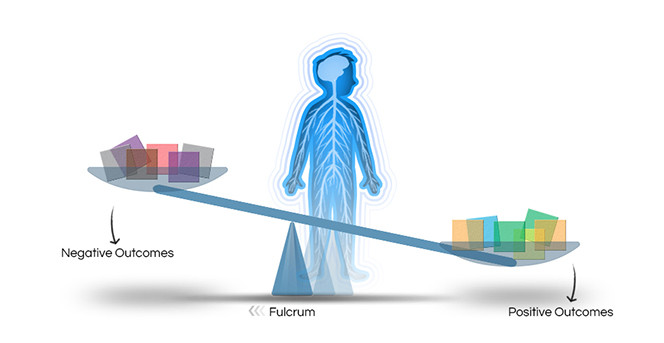As parents, teachers, and community members, we hold a responsibility towards nurturing socially, emotionally, and physically resilient children so they are able to deal with any obstacles that come their way throughout life. We all strive to make the lives of our children filled with joy, discovery, and happiness.
But just like adults, children inevitably face challenges and stress in their daily living. Whether it’s natural stressors such as experiencing new social situations (f.e. meeting new people) or more serious hardships such as losing a loved one, developing resilience allows children to cope and create a good outcome of these difficulties.
Resilience is defined as “the combination of protective factors that enable people to adapt in the face of hardship through balancing management of difficulty.” (center on the developing child, Harvard University).
In this post, we will take some time to learn more about resilience and how we can instill it in our children.
The Science behind Resilience:
Resilience is not a trait that humans are born with. Rather, as our brain architecture builds over time, resilience also builds. It is impacted by a combination of individual characteristics such as temperament and sociability and environmental influences such as positive relationships and stresses that are present in life (Zolkoski & Bullock, 2012).
As children come across different difficulties, their experiences with how the situations were dealt with, both physically and mentally, accumulate to create a framework in their minds about what stress is and how to deal with it. If handled correctly, these experiences can contribute positively to a child’s ability to manage stress in the future.

The Center on the Developing Child of Harvard University (2018) offers a balance scale to depict how positive life experiences and factors can counterbalance the negative ones we experience. The more positive life experiences and coping skills a child has to deal with stress, the more likely it is that the scale tips towards positive outcomes and therefore a more resilient child.
To learn more about the interaction of our individual traits and our environment in the development of resilience, watch this video from the Center on the Developing Child.
Strategies for Developing Resilience:
Below we share some ways to foster resilience in our children.
Positive Adult-Child relationships: The most important factor which is key to developing resilience is the relationships children build with adults. The hugs, kisses, snuggles, and even the structure, rules and boundaries that adults provide for children create a protective barrier and improves a child’s resilience and wellbeing. Even within difficulties, attachment studies have shown that responsive interactions and ones of care and love can help formulate a positive sense of identity and the world.
- In the classroom, Ethos teachers and caregivers foster positive relationships through practicing serves and returns, particularly by being sensitive to the signals that children give and responding to them warmly .
- This is a great practice for parents to implement as well as it shows children that they have a safe haven when they need it. Other ways to cultivate a positive relationship includes engaging in family time and interactions such as reading together or talking about what happened in the day.
Developing Self efficacy and self regulation: Having the ability to self regulate results in more positive social behavior and moods, as well as the ability to subjugate one’s feelings and responses (Killingsworth & Gilbert, 2010). When a child has the self esteem and ability to regulate themselves, it also works as protective factors in facing difficulties.
- In the classroom, the environment has been prepared to encourage choice and independence in a way that supports the development of concentration which is considered an engine of self regulation. Self efficacy is also boosted through the practice of choice, as well as attention given to interests children hold (Schiefelee & Csikszentmihalyi, 1994), and through nurturing responsive relationships with teachers and staff.
- At home, you can build your child’s self efficacy by letting them try new activities, providing encouragement, and guidance on how to learn from and deal with hardships. Self regulation can be built through establishment of routines, and opportunities to choose their own actions.
Opportunities to strengthen adaptive skills: When children are faced with stressors and difficulties, helping your child make sense of it gives a feeling of comfort and departs the idea that the difficult experiences they face can be understood and withstood. When stress comes along, they provide an opportunity to learn and practice adaptive skills.
- In the classroom, when children are faced with difficult situations, teachers warmly help children make sense of it by putting what happened into words and offering strategies to cope.
- At home, parents can utilize opportunities of positive stressors (stress that is a normal part of healthy development such as receiving an injection, dealing with unhappy emotions, having a new babysitter, etc) to practice coping and adaptive skills such as communicating, planning, and problem solving.
Developing resilience is an integral part of the mindset of Ethos. We recognize that it is essential for children to develop resilience to grow into healthy, productive, and thriving citizens of our future. In our center, we do what we can to ensure that our children gain experiences that support its development.
If you would like more information regarding resilience or any other ideas, you are always welcome to reach out.
Till next post,
Aleezeh Makani
Ethos is a new mindset and model for child care and early education for children aged 6 weeks to 5 years in the South Boston, MA Area. We pride ourselves on our dedication to serving our students and families in ways that are research-driven and nurturing to who they are and can become. Request more information online here!